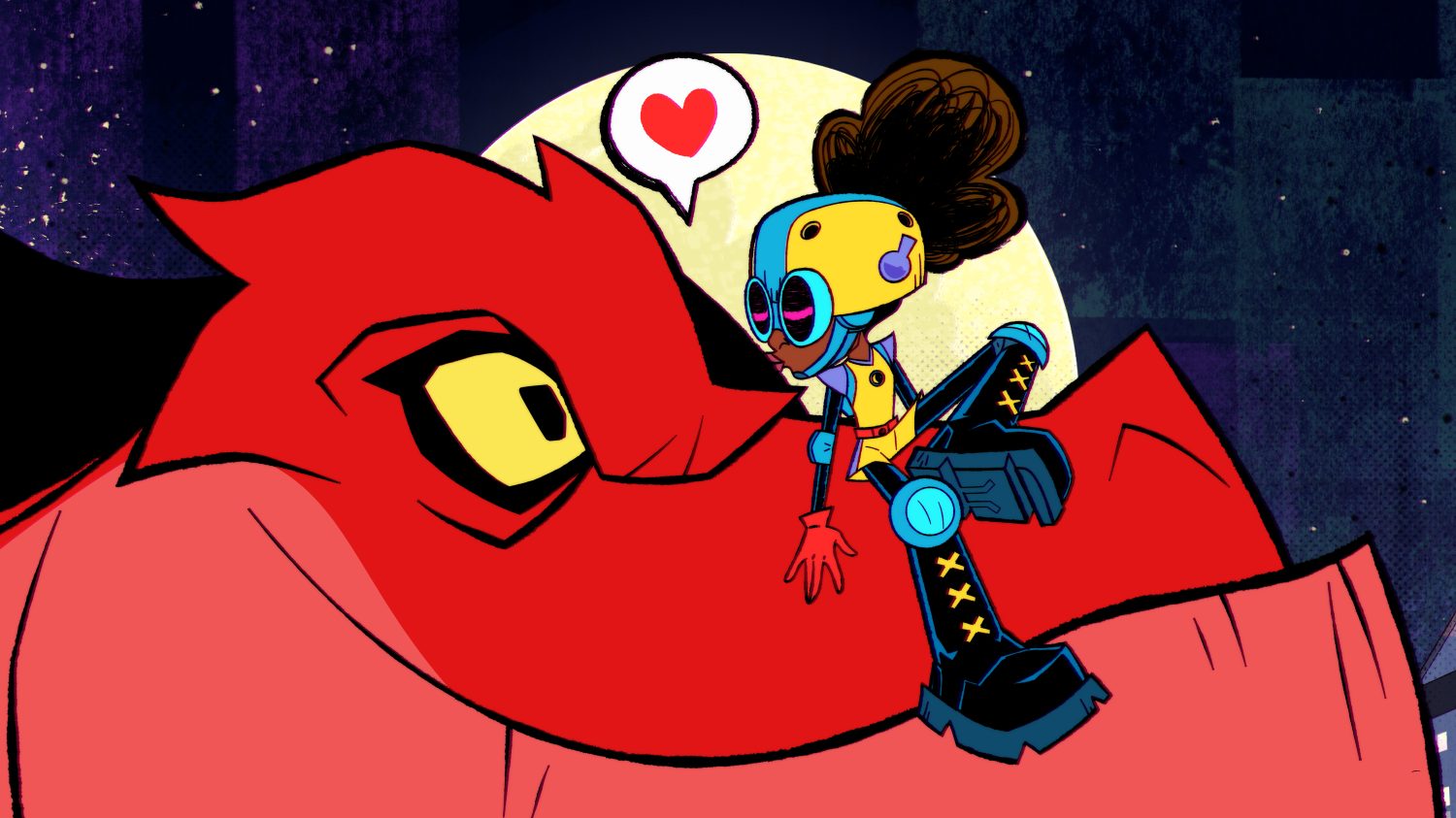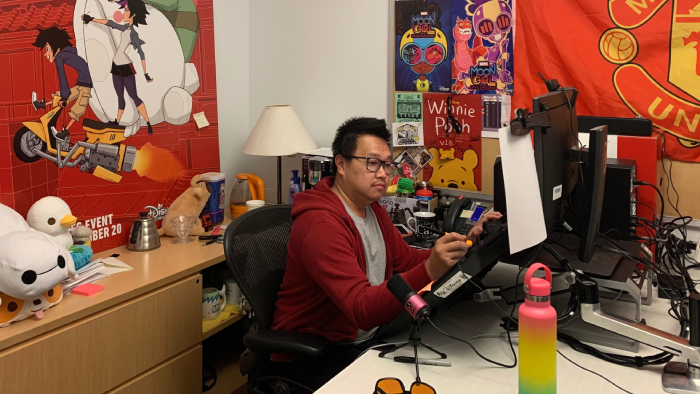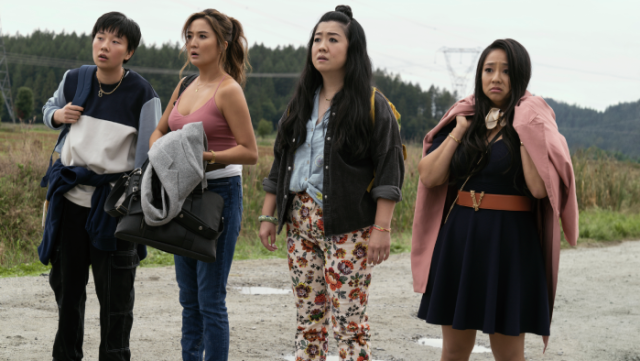Whether battling electrical blackouts or literal internet trolls, Moon Girl and her pet tyrannosaurus rex, Devil Dinosaur, are standing up for those who can’t—and scoring some style points along the way.
Based on the comic book series of the same name, the animated Marvel show “Moon Girl and Devil Dinosaur” follows tween genius Lunella Lafayette (Diamond White), aka Moon Girl, on her quest to defend New York City’s Lower East Side. After accidentally transporting a hotdog-obsessed dino to the 21st century, Lunella gears up with a pair of super skates and some PR help from her best friend, Casey (Libe Barer), to become the hero her neighborhood deserves. The series will premiere on Disney Channel this Friday, Feb. 10.
Animator and director Ben Juwono helped bring Lunella’s superhero antics to life. A former physicist, Juwono turned to a career in animation after feeling unfulfilled at his day job, and has since worked on “Big Hero 6: The Series” and “The Adventures of Puss in Boots.” He works as supervising producer on “Moon Girl and Devil Dinosaur.”
Juwono recently joined Character Media to discuss his work on the series and why the show is a pitch-perfect watch for both young and young-at-heart audiences.
CM: Were you a fan of the original comics before working on “Moon Girl and Devil Dinosaur?”
Juwono: I was. I love dinosaurs and was drawn into it for the Devil Dinosaur aspect. I believe I picked up the “Moon Girl” comics for the first time around 2018, and it was sitting on my shelf at work when development reached out to me to help out on the project.
The series has such a fun, nostalgic 2D animation style. What were some of your inspirations in developing those visuals?
“Spider-Man: Into the Spider-Verse” was a big inspiration for the bright colors and high-energy animation. It changed the game for everyone when it came out, and we wanted to be able to bring it into TV. Since we’re not a CG show, we leaned into our 2D style and incorporated a lot of the ink-and-paint aspect of comic books. Basically, as much as we can, we try to avoid any sort of digital effects like motion blurs. If it can’t be achieved with ink and paint on paper, we don’t do it.
I’m personally a big fan of “One Piece,” a manga I’ve been reading weekly since the early 2000s, so we also took inspiration from visual cues normally used on manga to reflect emotions. We call these flairs—like when a character is frustrated, not only do you see it in their expression, but there’s also a visual “grumble cloud” that animates above the character’s head.
How does the show differ from your previous work with Disney? Were there any notable differences in the creative process?
The biggest difference is the musical aspect of “Moon Girl.” Even when there’s no music, we think a lot about the rhythm of the dialog and the sound effects, when to pause, when to speed up. [In every episode] we also have a “mix-tape moment,” which is a world of abstraction that Lunella/Moon Girl goes into once she hits Play on the tape deck. We wanted each of these to feel like a music video, so the process of handling that is very different from my previous shows. Music normally doesn’t come until after animation is complete and we’ve gone into post production. But because the mix-tape moments are built in, we get the music first, so when we storyboard it, it’s letting the music guide the rhythm. If the music is upbeat, we make more cuts so we can have the action land on hits. If the music is slow and sustained, we hold on a scene and let the action play out a bit more before landing a hit.

The show also has a wonderfully diverse range of characters. Were you able to incorporate any Indonesian cultural influences into your work on the show?
Nothing specific, but the show does touch on the topics of a multigenerational family living under the same roof, which is quite common for Indonesians. I grew up in a house with my parents and my grandparents, so the family relationship aspect really speaks to me. You get a lot of wisdom growing up in a household with adults from different generations. There’s a lot you can learn from them. Even from our early development days, we’ve always talked about how different members of the family represent different aspects of Lunella, or, rather, different things she needs to learn as she grows up.
How do you hope Lunella/Moon Girl can inspire young viewers, especially girls who could use a female role model in S.T.E.M.?
I hope they realize that S.T.E.M. is fun and not scary. I come from a S.T.E.M. background, as I went to undergrad and grad school for physics before I switched careers to animation. The thing that got me really into physics as a kid was the old TV show “Quantum Leap,” with Scott Bakula. I loved the idea of time travel so much that I grew up with the thought of, “If I become a quantum physicist, one day I’ll be able to invent time travel.” I hope our show can inspire young viewers the same way “Quantum Leap” did to me when I was a child.

What was it like to translate real-life problems, like internet trolls and financial struggles, into an animated series geared toward younger viewers?
It’s important to approach these issues by, first and foremost, acknowledging that they are complex and nuanced. Not one of us has the absolute best solution to each of these issues because everyone experiences them differently. So, when we work on the episodes that tackle these issues, our stance is to listen. We consult with various groups so we can gain insight and understanding. We also invite everyone on our crew to voice their opinions.
This show has truly been one of the most collaborative shows I’ve ever been on. Not a single idea or concern was ever just dismissed. The leadership team is full of kind and compassionate people who are always willing to listen and approach things the right way.





